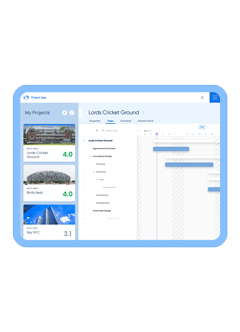Is the project on track? The question is simple, asked every day by design consultancies and their clients. The answer, however, can be hard to come by.

All too often, project complexity, disparate project management systems, disconnected internal processes, or some unfortunate combination of these factors can cloud a project manager’s ability to clearly view the status of a project.
Measuring performance has been a long-standing challenge for many project-driven organizations. So, for an institutional issue, I offer an institutional solution: Earned Value Management (EVM).
First developed by the U.S. Department of Defense (DoD) in the 1960s, EVM is a technique for objectively measuring project performance from both financial and scheduling perspectives. Built on top of the “project management triangle” (also known as the triple constraint), EVM leverages measurements of scope, time, and cost to assess progress and forecast where a project is headed.
The EVM technique helps ensure that the job is completed on time, within budget, and according to specifications. More specifically, the DoD notes that project managers use EVM to:
- Quantify and measure project performance,
- Provide a warning system for departure from a baseline,
- Minimize risks associated with cost and schedule deviations, and
- Forecast final costs and schedule outcomes.
Since the development of this technique, EVM has been tested and proven on thousands of defense contracts, and is now employed across a multitude of industries around the world – from construction to information technology to manufacturing – to better track and steer projects.
A number of design consultancies have also begun incorporating EVM into their project management methodology to get clearer, timelier insight into project status. However, the technique still represents unexplored territory for many architecture and engineering firms – especially those without an enterprise project management software solution.
Over the next few weeks, we will take a practical look at the business value of incorporating EVM into your organization’s project delivery approach. We’ll be discussing the core EVM metrics professional services organizations should monitor, how to implement the technique within your firm, and ways to leverage technology throughout the process.
In the mean time, what questions do you have about Earned Value Management? Ask us in a comment below!
Author’s Note: This is the first article in a four-post series on the use of Earned Value Management in professional services organizations.









